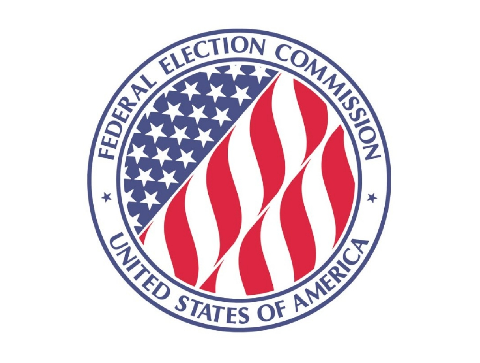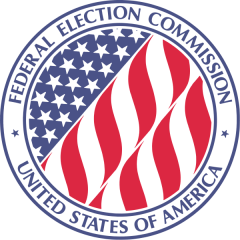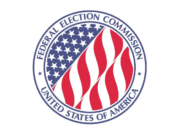PDF of comments available here
Federal Election Commission
Attn: Robert M. Knop, Assistant General Counsel
1050 First Street N.E.
Washington, D.C. 20463
Re: Notice [Notice 2018–05], Rulemaking Petition: Size of Letters in Television Disclaimers
Via Electronic Submission
Dear Commissioners:
On behalf of the Institute for Free Speech (“Institute”)[1], we respectfully submit the following in response to the Federal Election Commission’s (“FEC” or “Commission”) request for comments on a rulemaking petition filed by Extreme Reach on December 3, 2018 (the “Petition”). That notice concerns potential rulemaking to revise the regulation pertaining to the size of letters in television disclaimers as currently controlled by 52 U.S.C. § 30120(d)(1)(B)(2) and 11 CFR 110.11(c)(3)(iii)(A).[2]
The Petition asks the Commission to “revise 11 CFR 110.11(c)(3)(iii)(A) to add a separate requirement for HD [High Definition TV] where letters must be equal to or greater than two (2) percent of the vertical picture height and specify that the four (4) percent of the vertical picture height requirement only applies to SD [Standard Definition].”[3]
Enacted in 1974 as part of the Federal Election Campaign Act (“FECA”), and modified in 2002 by the Bipartisan Campaign Reform Act of 2002 (“BCRA”), 52 U.S.C. § 30120(d)(1)(B)(2) states that any communication financed by a political committee that “expressly advocat[es] the election or defeat of a clearly identified candidate”,[4] must, if transmitted through television, contain a statement that “…shall also appear in a clearly readable manner with a reasonable degree of color contrast between the background and the printed statement, for a period of at least 4 seconds.”[5] (emphasis added).
Standard Definition televisions contain aspect ratios of 720 pixels (horizontal dimension) by 480 pixels (vertical dimension). As such, four percent of the vertical picture height of 480 pixels is 19.2 pixels. High Definition televisions, which three years ago made up 81% of households in the United States,[6] contain an aspect ratio of 1920 pixels (horizontal dimension) by 1080 pixels (vertical dimension). Therefore, four percent of the vertical picture height of 1080 is 43.2 pixels, more than twice the number of pixels contained in SD television.
Extreme Reach’s Petition is a common-sense approach to current and future changes in technology, and the petition’s recommended change clearly complies with the law. First, most televisions today are significantly larger than those of the 1970’s when FECA was enacted, and even than the televisions of the early 2000’s when BCRA was enacted.[7] In 1970, the average television size was approximately 17.5 inches. By 2002, television screens averaged 27.5 inches. Today, 83% of televisions sold this year have a screen size that exceeds 40 inches (and most televisions are even bigger, see Ex. A).[8] Because of these changes, television screens are significantly larger and the disclaimers, in turn, are bigger as well. While still proportionally 4% of the screen, the disclaimer itself has significantly increased in size, and will continue to increase as screen size grows. FECA only mandated a “clearly readable” standard. On larger screens, the two percent vertical picture height will be objectively larger, and therefore still “clearly readable”, even though it takes up proportionately less space on the screen than when the regulation was adopted.
Second, because HD televisions have more pixels per screen, the disclaimer’s resolution is much sharper than on an SD screen. Therefore, 11 CFR 110.11(c)(3)(iii)(A)’s four percent vertical picture height requirement does not track the increase in picture quality.
Third, the rigidity of the Commission’s regulation in this case is unlike that of other federal agencies or industry standards. In fact, no current regulations or industry standards require a four percent vertical picture height despite changes in technology. For example, the FCC requires that closed captioning follow four guidelines: accuracy, synchronicity, completeness and proper placement.[9] The regulation does not require a specific size for letters on the screen itself.
Similarly, to prevent unfair or deceptive acts or practices in the advertising of a variety of products, including over-the-counter drugs, dietary supplements, and certain medical devices, the FTC has issued statements and regulations that establish standards for determining whether disclosures in both broadcast and print advertisements are clear and conspicuous. In its enforcement policy, an affirmative disclosure in a television commercial was “clear and conspicuous” if it contained “letters of sufficient size so that it can easily be seen and read on all television sets, regardless of picture tub size.”[10] (emphasis added). Unlike the regulation at issue, the FTC’s regulations do not require that disclosures take up a fixed proportion of the screen.
Though drafted nearly fifty years ago, the FTC’s policy statement remains relevant because it ties the size of the disclosure to visibility rather than to an inflexible percentage of picture height.
Likewise, as Extreme Reach points out, advertising guidelines published by the major networks (ABC, NBC, etc.), require that disclaimers, supers and horizontal crawls be 22 pixels in height – approximately two percent of vertical height for HD screens.
Fourth, the disclaimer visibility proposed in the Petition can easily be seen and read by the human eye. Specifically, taking the typical screen size of 40 inches, viewed at an average of 5.6 feet,[11] 22 pixels result in approximately 0.4 inches of disclaimer font size, which makes the angular size of the disclaimer as 20.6 minutes of arc when viewed from 5.6 feet. 20/20 vision is defined as the ability to recognize the letters on a certain row of the Snell eye chart from a distance of 20 feet when the letters in that row are subtended at an angle of 5 minutes of arc.[12] Given that a two percent (22 pixels) vertical picture height equal 20.6 minutes of arc, viewed from a much closer distance of 5.6 feet, rather than the 20 feet required in vision testing, the disclaimer size suggested in the Petition results in an image four times greater than the Snell chart’s letter size for 20/20 vision. This allows for the disclaimer, even at two percent, to be “clearly readable.”
Thank you for considering these comments. The Commission is “[u]nique among federal administrative agencies” because its “sole purpose is the regulation of core constitutionally protected activity.”[13] Accordingly, it should be particularly sensitive to concerns that its regulations will cause disclaimers to unnecessarily intrude on the message conveyed by speakers. Therefore, while it may appear to be a relatively unobtrusive requirement, the size of letters in disclaimers which expressly advocate the election of a candidate should conform to the original “clearly readable” standard rather than an arbitrary four percent standard that is both confusing and outdated. A two percent standard for HDTV and future TVs with even higher resolution is “clearly readable” and has the benefit of remaining relevant for long time to come.[14]
Respectfully submitted,
Allen Dickerson
Shella Sadovnik
Institute for Free Speech
124 S. West Street, Suite 201
Alexandria, VA 22314
[1] The Institute is a nonpartisan, nonprofit § 501(c)(3) organization that promotes and protects the First Amendment political rights of speech, press, assembly, and petition. Originally known as the Center for Competitive Politics, it was founded in 2005 by Bradley A. Smith, a former chairman of the Commission. In addition to scholarly and educational work, the Institute is actively involved in litigation against unconstitutional laws at both the state and federal levels.
[2] Petition for Rulemaking to Revise the Size of Letters in Television Disclaimers, 84 Fed. Reg. 3344 (Feb. 12, 2019) (to be codified at 11 C.F.R. pt. 110). REG 2018-05 Size of Letters in Television Disclaimers.
[3] Petition at 2.
[4] 52 U.S.C. § 30120(a).
[5] 52 U.S.C. § 30120(d)(1)(B)(2).
[6] https://www.benton.org/headlines/hdtv-sets-now-over-80-percent-us-households. The study may be ordered through https://www.leichtmanresearch.com/.
[7] https://www.tribecafilm.com/stories/5136196c1c7d769461000007-movie-industry-must-bring.
[8] https://www.statista.com/chart/3780/tv-screen-size/.
[9] REPORT AND ORDER, DECLARATORY RULING, AND FURTHER NOTICE OF PROPOSED RULEMAKING, adopted February 20, 2014, FCC 14-12, available at https://apps.fcc.gov/edocs_public/attachmatch/FCC-14-12A1.pdf.
[10] CCH Trade Regulation Reporter, Paragraph 7569.09 “Clear and Conspicuous Disclosure,” October 21, 1970.
[11] https://www.rtings.com/tv/reviews/by-size/size-to-distance-relationship.
[12] https://www.nist.gov/sites/default/files/documents/el/isd/ks/Visual_Acuity_Standards_1.pdf.
[13] Am. Fed’n of Labor-Congress of Indus. Orgs. v. Fed. Election Comm’n, 333 F.3d 168, 170 (D.C. Cir. 2003).
[14] Petition at 2.














